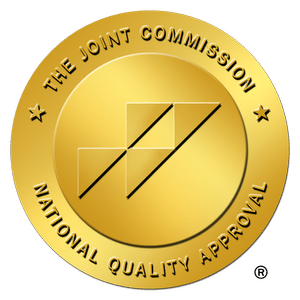Understanding the Healing Process Behind Ketamine Infusion
How Does Ketamine Therapy Work?
Ketamine is a dissociative anesthetic that has some hallucinogenic effects. It distorts perceptions of sight and sound and makes the user feel disconnected and not in control. It is an injectable, short-acting anesthetic for use in humans and animals.
Ketamine infusion therapy is an off-label groundbreaking approach in treating various mental health disorders, including depression, anxiety, and PTSD. Understanding the healing process behind ketamine infusion is crucial for patients to optimize their recovery and gain the most benefit from this innovative treatment.
Ketamine works distinctly compared to traditional antidepressants. It targets the NMDA receptors in the brain, which play a significant role in mood regulation and synaptic plasticity. By acting on these receptors, ketamine can rapidly enhance neuroplasticity—the brain’s ability to form new neural connections—thereby fostering a healing environment within the brain. This process is vital for individuals with depression or other mental health conditions, where neural connections may be weakened or dysfunctional.
After a ketamine infusion, patients might experience immediate changes in their perception and mood, often described as a dissociative experience. This phase is temporary and typically subsides within hours after the treatment. However, the therapeutic effects of ketamine on mood and cognition can begin to manifest more substantially in the days following the infusion. It’s during this period that patients can engage in activities that reinforce the treatment’s benefits.
Neuroplasticity: The Heart of the Process
Neuroplasticity is at the heart of the healing process post-ketamine infusion. This enhanced state of neural flexibility allows patients to break free from the rigid, negative thought patterns often associated with mental health disorders. To leverage this window of heightened brain plasticity, patients are encouraged to engage in positive, constructive behaviors and therapies.
Cognitive-behavioral therapy (CBT), mindfulness practices, and other forms of psychotherapy can be particularly effective when the brain is more receptive to forming new, healthier neural pathways.
Understanding and embracing the concept of neuroplasticity is essential for patients undergoing ketamine infusion therapy. Recognizing that the brain is actively healing and adapting post-treatment can provide a sense of hope and empowerment. Patients are encouraged to maintain an active role in their healing process, capitalizing on the enhanced capacity for change during this period. This can involve setting new goals, practicing self-care, and consistently engaging in therapeutic activities that promote mental wellness.
In summary, the healing process behind ketamine infusion is a dynamic and multifaceted journey. It involves immediate biochemical changes in the brain, followed by a period of enhanced neuroplasticity, offering a unique opportunity for profound psychological growth and healing. Patients who actively engage in their recovery process, supported by a comprehensive care plan, are positioned to achieve the most beneficial outcomes from their ketamine therapy.
Ketamine Therapy: Step-by-Step Process
Ketamine therapy is emerging as a promising treatment for various mental health disorders, offering new hope for patients who have not benefited from traditional therapies. Understanding the step-by-step process of ketamine therapy is key for individuals considering this treatment, enabling them to prepare mentally and physically for the journey ahead.
Before Treatment
- Consultation and Evaluation: The first step in ketamine therapy is an in-depth consultation with a healthcare provider specializing in this treatment. During this stage, medical history, current health status, and mental health conditions are thoroughly evaluated to determine if ketamine therapy is a suitable option. It’s essential for patients to disclose all medications and supplements they are taking, as some substances may interact with ketamine.
- Setting Expectations: Understanding what ketamine therapy can and cannot do is vital. Healthcare providers will discuss the potential benefits, risks, and the overall process to set realistic expectations for the treatment.
- Preparation: Patients are usually advised to avoid eating or drinking for several hours before the infusion to reduce the risk of nausea. Comfort is key, so wearing comfortable clothing and arranging for a calm, stress-free environment post-treatment is recommended.
During Treatment
- The Infusion: Ketamine is administered intravenously in a controlled clinical setting. The dosage is carefully calculated based on the patient’s weight and medical condition. During the infusion, which typically lasts about 40 minutes to an hour, patients may experience dissociative effects, feeling detached from their surroundings and themselves.
- Monitoring: Throughout the infusion, medical staff closely monitor the patient’s vital signs, ensuring their safety and comfort. Patients might feel various sensations, such as floating or slight dizziness, which are normal responses to ketamine.
- Support: It’s not uncommon for patients to experience intense emotions or thoughts during the infusion. A trained therapist or healthcare provider is often present to offer support and reassurance, helping patients navigate their experiences.
After Ketamine Infusion
A Day After Ketamine Infusion: What to Expect?
- Immediate Effects: The hours following the infusion are crucial for recovery. Patients might feel tired or slightly disoriented, which typically diminishes within a few hours. Some individuals report immediate improvements in mood or a reduction in depressive symptoms, while for others, these changes develop over the subsequent days.
- Rest and Reflection: It’s advised to take it easy for the rest of the day. Engaging in calm, relaxing activities and avoiding stressful or demanding tasks allows the brain and body to integrate the experience.
Aftercare Tips
- Self-Care: Prioritizing sleep, nutrition, and hydration is key to a smooth recovery. Resting allows the brain to process the ketamine’s effects, and consuming a balanced diet supports overall well-being.
- Therapy and Support: Post-infusion is an optimal time to engage in therapeutic activities, as the brain’s enhanced neuroplasticity can facilitate significant psychological growth. Counseling or therapy sessions can be particularly beneficial, helping patients explore and consolidate new insights and coping strategies.
- Monitoring and Follow-Up: Keeping track of mood and cognitive changes post-infusion is important. Patients should have a follow-up appointment with their healthcare provider to discuss the effects of the treatment and plan any subsequent infusions.
- Avoiding Alcohol and Recreational Drugs: To maximize the treatment’s benefits, patients are advised to avoid alcohol and recreational drugs, as these substances can interfere with the therapeutic effects of ketamine.
- Building a Support Network: Having a support system of family, friends, or support groups can provide emotional comfort and practical help during the recovery phase.
- Engaging in Positive Activities: Activities that promote relaxation, such as mindfulness, meditation, or gentle exercise, can enhance the therapeutic effects of ketamine. Patients are encouraged to engage in hobbies or activities that bring them joy and fulfillment.
- Setting Realistic Goals: It’s helpful to set achievable, realistic goals post-treatment. Whether it’s improving a particular aspect of mental health or taking steps towards personal aspirations, having clear objectives can guide the healing process.
- Continuous Care: Ketamine therapy may require multiple sessions for optimal results. Continuous care, including regular check-ins with healthcare providers, ensures that the treatment remains effective and adjusts to the patient’s evolving needs.
Ketamine therapy is a multi-stage process that requires careful preparation, monitoring, and aftercare to maximize its therapeutic benefits. Understanding each step of the journey helps patients and their loved ones navigate the experience with confidence and clarity, paving the way for a more hopeful and healthier future.
How to Get the Most Out of Ketamine Therapy?
Maximizing the benefits of ketamine therapy requires a holistic approach that encompasses preparation, active participation during treatment, and dedicated aftercare. Here’s how patients can optimize their experience and outcomes with ketamine therapy.
Preparation is Key
- Educate Yourself: Understanding how ketamine works and what to expect during and after the therapy can alleviate anxiety and foster a positive mindset. Knowledge empowers patients to actively engage in their treatment process.
- Set Intentions: Patients should clarify their goals and intentions with their healthcare provider. This alignment ensures that the treatment is tailored to the individual’s specific needs and expectations.
- Optimize Physical Health: A healthy body supports a healthy mind. Prioritizing sleep, nutrition, and physical wellness can enhance the body’s response to ketamine and aid in recovery.
Active Participation During Treatment
- Embrace the Experience: The dissociative experience induced by ketamine can be profound. Approaching it with openness and curiosity, rather than resistance or fear, can lead to more meaningful insights and therapeutic outcomes.
- Therapeutic Alliance: Building a strong therapeutic relationship with the healthcare provider or therapist can enhance the treatment’s effectiveness. Communication and trust are fundamental components of a successful therapy journey.
- Mindful Awareness: Being present and attentive to the experience, even if it’s challenging, can facilitate deeper self-exploration and understanding, which are crucial for long-term healing.
Dedicated Aftercare
- Integration: The days and weeks following ketamine therapy are a critical period for integrating new insights and changes. Patients should engage in reflective practices, journaling, or therapy to process and make sense of their experiences.
- Lifestyle Adjustments: Incorporating healthy routines, such as regular exercise, meditation, and a balanced diet, can sustain the positive effects of ketamine therapy. Avoiding substances that can interfere with the treatment’s outcomes is also crucial.
- Support System: Leaning on a support network of friends, family, or support groups can provide emotional sustenance and encouragement, which are vital for enduring change.
- Continuity of Care: Follow-up sessions and ongoing communication with healthcare providers ensure that the patient’s progress is monitored and the treatment plan is adjusted as needed for optimal results.
- Engage in Meaningful Activities: Pursuing activities that bring joy and purpose can reinforce the positive changes initiated by ketamine therapy, aiding in the cultivation of a fulfilling and balanced life.
By approaching ketamine therapy with preparation, active engagement, and a commitment to aftercare, patients can significantly enhance their healing journey, making the most of this innovative treatment to achieve profound and lasting improvements in their mental health.
Aftercare FAQs for Ketamine Therapy
1. How long should I rest after each ketamine infusion?
It’s recommended to rest for the remainder of the day following your infusion. Avoid engaging in strenuous activities or operating heavy machinery. Each individual’s recovery time may vary, so listen to your body and allow yourself ample time to recuperate.
2. Can I eat and drink immediately after my infusion?
You may have light meals after the infusion, but it’s best to start with small, easy-to-digest foods in case you experience any nausea. Hydration is also crucial, so drink plenty of water.
3. When should I resume work or school after Ketamine therapy?
It’s generally advisable to take at least a day off after each session to fully recover. Depending on how you feel, you may resume work or school the following day, but it’s best to avoid demanding tasks or high-stress environments initially.
4. Is it normal to experience mood fluctuations after Ketamine therapy?
Yes, it’s normal to experience some mood fluctuations as your brain adjusts and responds to the treatment. These should stabilize over time, but if they persist or are concerning, contact your healthcare provider.
5. What should I do if I experience unusual thoughts or feelings after the therapy?
It’s important to report any significant changes in your thoughts or feelings to your healthcare provider. Keeping a journal of your experiences can also be helpful for tracking changes and discussing them during follow-up appointments.
6. Can I take my regular medications after Ketamine therapy?
Discuss your medications with your healthcare provider before resuming them post-treatment. Some medications might need to be adjusted or temporarily halted, depending on their interaction with Ketamine.
7. How can I maximize the benefits of ketamine therapy after the treatment?
Engage in activities that promote mental wellness, such as mindfulness, therapy, exercise, and hobbies. Avoid alcohol and recreational drugs, and maintain a supportive network of friends or family.
8. When should I schedule a follow-up appointment after ketamine therapy?
A follow-up appointment is typically recommended within a week after your treatment to discuss your experience and any adjustments needed in your care plan. Always adhere to the schedule recommended by your healthcare provider to ensure the best outcomes.













